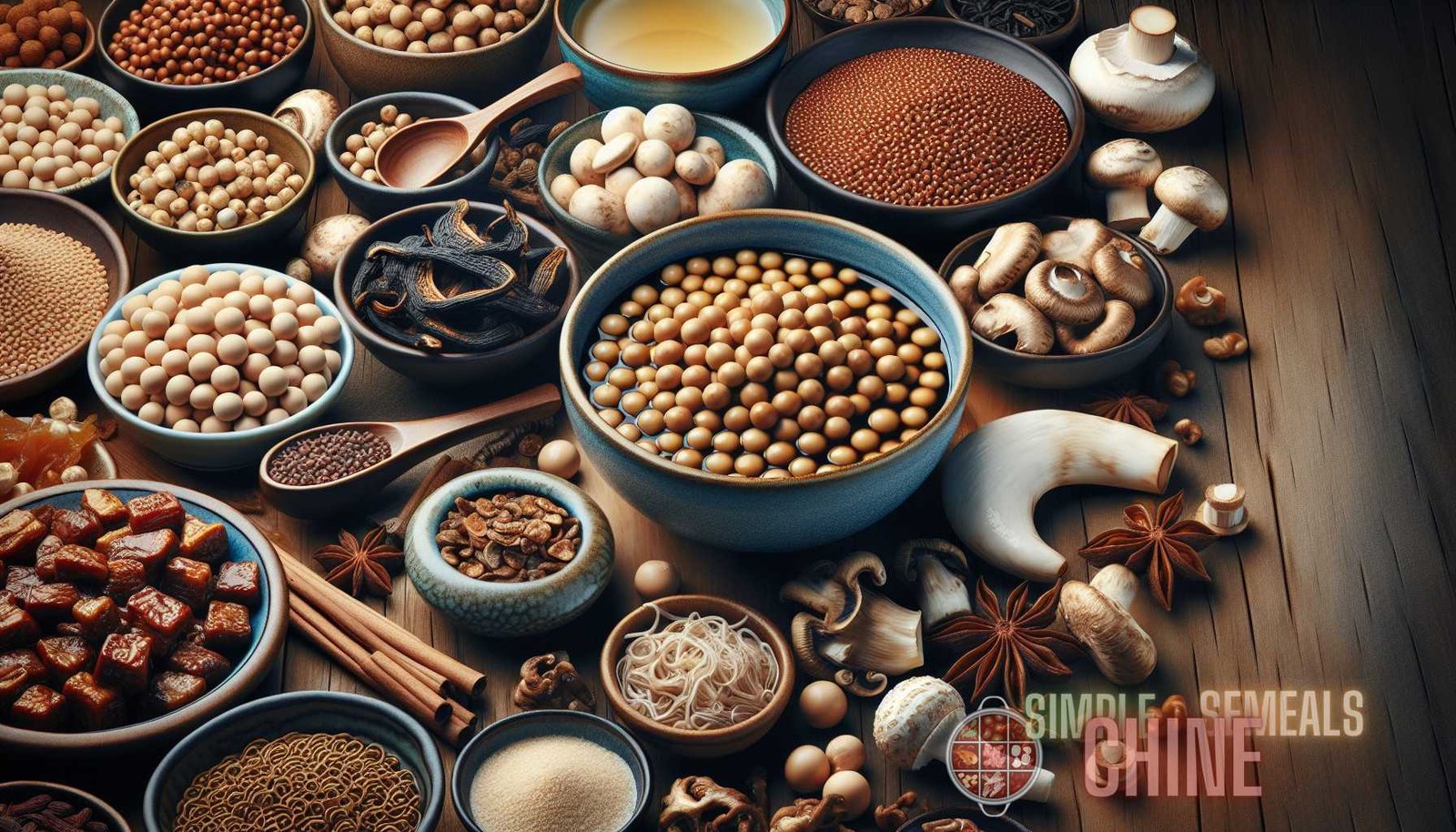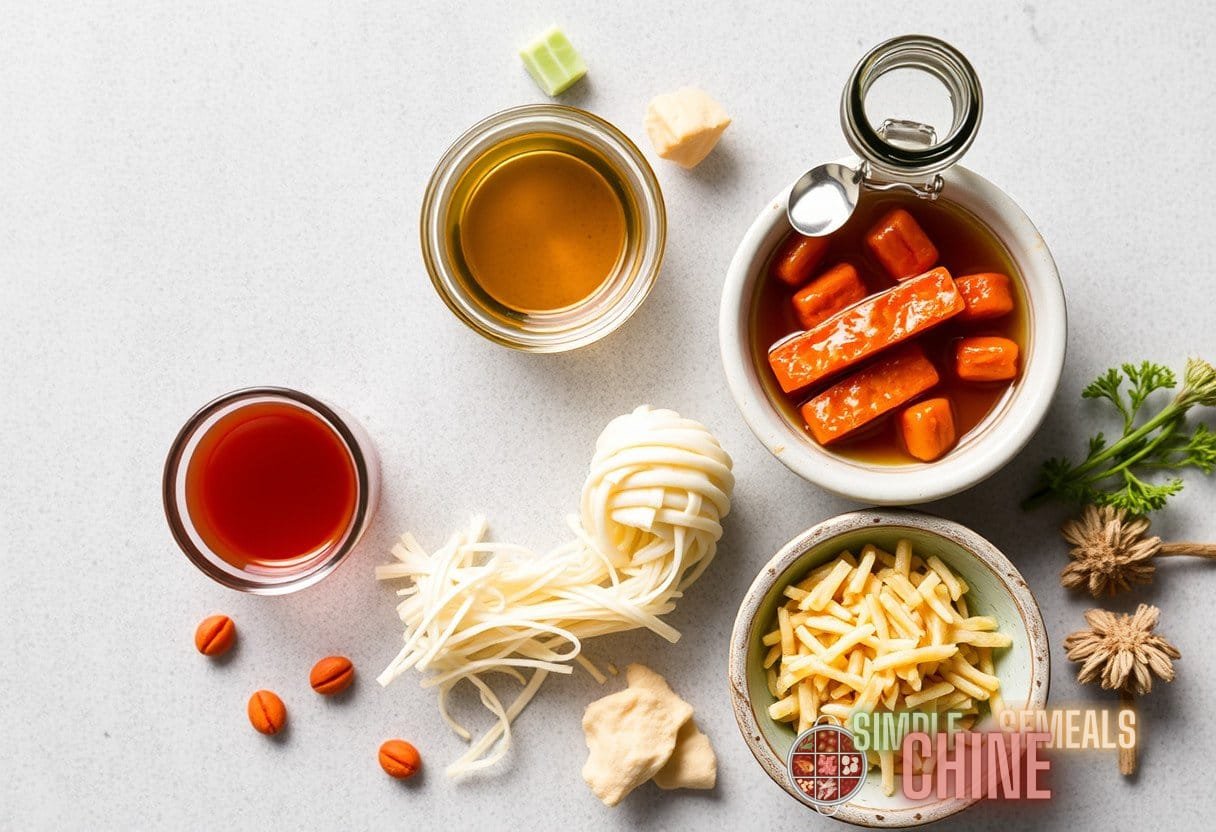Introduction
Umami, often referred to as the fifth taste, is a unique flavor that adds depth and richness to a wide range of dishes. While umami can be found in various cuisines around the world, Chinese culinary ingredients are known for their exceptional umami qualities. From fermented soybeans to mushrooms and dried seafood, Chinese cuisine showcases a plethora of ingredients that are packed with umami goodness.
In this article, we will delve into the science behind umami and unravel the flavor secrets of Chinese culinary ingredients. We will explore how umami is perceived by our taste buds, the role of umami in Chinese cooking, and the specific ingredients that contribute to the umami flavor profile. So, let’s embark on this umami-filled journey and uncover the magic of Chinese culinary ingredients!
What Is Umami?
Umami is a Japanese word that translates to “pleasant savory taste” or “deliciousness.” It was first identified by Japanese scientist Kikunae Ikeda in 1908, who discovered that certain foods, such as kombu seaweed, had a unique and distinct taste that couldn’t be attributed to the existing four tastes: sweet, salty, sour, and bitter.
Umami is characterized by its rich, savory, and mouthwatering flavor, which enhances the overall taste of food. It is often described as a meaty or brothy taste that adds depth and complexity to dishes. Umami is not limited to specific types of cuisine but can be found in ingredients and dishes from all over the world.
Umami and the Taste Buds
To understand the science behind umami, we need to explore how our taste buds perceive it. The taste buds on our tongues house receptor cells that detect different tastes. These receptor cells are equipped with specialized taste receptors that respond to specific molecules in food.
The umami taste is mainly triggered by the presence of glutamate, an amino acid found in various foods. When glutamate binds to the umami taste receptors on the taste buds, it sends signals to the brain, resulting in the sensation of umami flavor.
Apart from glutamate, another compound that contributes to the umami taste is ribonucleotides, specifically inosine monophosphate (IMP) and guanosine monophosphate (GMP). These ribonucleotides are naturally present in certain foods and can intensify the umami flavor when combined with glutamate.
Interestingly, umami taste receptors are not limited to the tongue alone. They are also present in the digestive system, respiratory system, and even the brain. This indicates that umami plays a significant role in our overall sensory experience of food.
Umami Flavor in Chinese Cooking
Chinese cuisine is renowned for its rich flavors and umami-laden dishes. Umami is one of the foundational tastes in Chinese cooking and is essential for achieving the well-balanced and harmonious flavor profiles that define the cuisine.
Umami is not only created by the individual ingredients used in Chinese cooking but also through various cooking techniques. Slow braising, stir-frying, and simmering are all methods that can enhance the umami flavors of the ingredients.
In Chinese cooking, achieving umami is all about striking the right balance between the five tastes (sweet, salty, sour, bitter, and umami) and creating a harmonious blend of flavors. Many traditional Chinese recipes rely on umami-rich ingredients to achieve this balance.
Chinese Culinary Ingredients with High Umami Content
Now, let’s explore some of the key Chinese culinary ingredients that are known for their high umami content:
- 1. Soy Sauce: Soy sauce, made from fermented soybeans, wheat, water, and salt, is a staple in Chinese cooking. It is packed with umami goodness, thanks to the presence of glutamate and other umami compounds.
- 2. Dried Shiitake Mushrooms: Dried shiitake mushrooms are a versatile ingredient in Chinese cuisine. When rehydrated, these mushrooms release a rich, meaty aroma and add a deep umami flavor to the dishes.
- 3. Oyster Sauce: Oyster sauce is a thick, dark sauce made from oysters, soy sauce, and other ingredients. It is a staple in Cantonese cuisine and contributes a distinct umami flavor to stir-fries and other dishes.
- 4. Fermented Soybean Paste (Doubanjiang): Doubanjiang is a spicy and salty paste made from fermented broad beans and chili peppers. It is commonly used in Sichuan cuisine and adds a complex umami flavor to dishes.
- 5. Fermented Black Beans: Fermented black beans, also known as douchi, are made by fermenting soybeans. These beans are commonly used in stir-fried dishes and condiments, adding a unique umami taste.
- 6. Dried Seafood: Various dried seafood, such as dried shrimp, dried scallops, and dried anchovies, are prevalent in Chinese cooking. These ingredients are rich in umami compounds and are often used to enhance the flavor of broths and soups.
These are just a few examples of the umami-rich ingredients used in Chinese cuisine. The combination of these ingredients with other seasonings and cooking techniques creates the complex and flavorful dishes that Chinese cuisine is known for.
Umami Insights in Chinese Cuisine
Chinese cuisine holds a wealth of umami insights that contribute to its unique and tantalizing flavors. Let’s explore some key umami insights in Chinese cooking:
1. Blending Ingredients for Enhanced Umami

Chinese cooks are masters at combining different umami-rich ingredients to create intense and layered flavors. By blending ingredients such as soy sauce, mushrooms, and dried seafood, they can achieve a depth of umami that elevates the overall taste of the dish.
For example, a classic Cantonese dish, “steamed fish with soy sauce,” showcases the power of blending umami ingredients. The fish is steamed with soy sauce, dried mushrooms, and dried shrimp, resulting in a dish that bursts with umami flavors.
2. Fermentation for Umami Development
Fermentation is a common technique used in Chinese cuisine to develop umami flavors. Fermented soybean pastes, such as doubanjiang, and fermented black beans are prime examples of the umami-rich ingredients created through this process.
During fermentation, the microorganisms break down proteins, releasing umami compounds and enhancing the overall taste of the ingredient. This is why fermented soybean products are valued for their umami contribution to Chinese dishes.
3. Slow Cooking for Umami Extraction
Slow cooking techniques, such as braising and simmering, are widely employed in Chinese cuisine to extract the maximum umami flavors from ingredients. The long cooking time allows the umami compounds to infuse into the dish, resulting in rich and flavorful creations.
Dishes like “red-cooked pork” and “braised beef noodles” are perfect examples of slow-cooked dishes that showcase the depth and complexity of umami flavors. These dishes typically require hours of simmering to achieve their signature taste.
4. Preservation Methods for Umami Concentration
Preservation methods, such as drying and salting, have been used in Chinese cuisine for centuries to enhance umami flavors. Ingredients like dried mushrooms, dried seafood, and cured meats, such as Chinese sausages, are all examples of umami-packed ingredients created through preservation.
By removing moisture from the ingredients, drying intensifies their umami content and concentrates the flavors. These preserved ingredients are then used in various dishes to add depth and complexity.
Unlocking the True Flavors with Chinese Culinary Ingredients
As we’ve discovered, Chinese culinary ingredients are a treasure trove of umami flavors. If you want to unlock the true flavors of Chinese cooking, it’s essential to have these umami-rich ingredients in your pantry. Head over to our article on Must-Have Ingredients for Your Pantry for an in-depth look at the key ingredients that will take your Chinese cooking to the next level.
Whether you’re a novice cook or an experienced chef, incorporating umami ingredients into your dishes will elevate their taste and make them truly memorable. Experiment with different flavors and combinations, and let the umami magic unfold in your kitchen!
Summary
Umami is a flavor that adds depth and richness to our favorite dishes, and Chinese culinary ingredients are renowned for their umami qualities. Through the combination of umami-rich ingredients, blending techniques, fermentation, slow cooking, and preservation, Chinese cuisine achieves a harmonious balance of flavors that leaves a lasting impression.
By understanding the science behind umami and exploring the umami insights in Chinese cooking, you can unlock the true flavors of Chinese cuisine and create extraordinary dishes. So, stock up on umami ingredients, experiment with recipes, and embark on a flavorful journey through the magic of Chinese culinary ingredients!
Sources
– “Umami.” Wikipedia.
– An article available at https://simplechinesemeals.site/ingredients/unlock-the-true-flavors-of-chinese-cooking-must-have-ingredients-for-your-pantry/.



